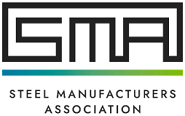Economy

SMA: EU TRQ Should Not Be Template for Other Section 232 Deals
Written by David Schollaert
January 28, 2022
When it comes to international trade policy regarding steel tariffs, it’s not one-size-fits-all, Steel Manufacturers Association (SMA) President Philip Bell said.
![]() As the U.S. government seeks to sunset the 25% steel tariff levied on imports in 2018 by the Trump administration through Section 232, deals should be individualized and specific to each nation’s steel industry, Bell said.
As the U.S. government seeks to sunset the 25% steel tariff levied on imports in 2018 by the Trump administration through Section 232, deals should be individualized and specific to each nation’s steel industry, Bell said.
During SMA’s winter meeting this past Thursday, Bell said that the Commerce Department and U.S. Trade Representatives (USTR), which have recently launched trade talks with Japan and the U.K., should not seek to replicate the tariff rate quote (TRQ) agreement with the EU.
The Biden administration in October reached a deal that replaced the blanket 25% tariff measure with a soft quota system allowing a certain volume of steel imports from the EU to enter the U.S. duty free. The new arrangement includes collaborative measures to decarbonize the steel industries in the U.S. and the EU and to combat unfairly traded excess capacity from non-market economies.
Trade officials from Japan and the U.K. are the first, but unlikely the last, looking to achieve similar deals with the U.S. And that is a cause for concern, Bell said.
“The most important thing that we need to realize is that the negotiated agreement with the EU should not serve as a template for the negotiations with Japan and the U.K.,” he said. “One of the main reasons is we cannot treat these countries the same way because their situations are not the same.”
Japan’s steel industry is a significant contributor to global excess steel capacity, Bell said, noting that Japan has exceeded domestic production by roughly 46% – pushing their excess capacity overseas at a clip of 30 million metric tons, or 36% of their total production.
“Instead of adjusting its capacity down, like we do here in the United States, Japan just opts to export its excess capacity,” he said.
Bell said USTR must also consider the Japanese steel industry’s carbon footprint when negotiating a new tariff deal. And he said Japan’s sustainability profile is behind the U.S.
“Japan has major environmental issues in their steel industry,” Bell said. “They do not have a large EAF footprint, and I think that they would have trouble … meeting the climate objectives and the framework that the U.S. and EU have put together.”
Similarly, Bell has several concerns when it comes to the U.K. given that it is also an export-oriented steel market.
“A lot of the steel production in the U.K. is owned by Chinese and Indian companies,” Bell said. “I’m afraid that if we’re not careful, a poorly negotiated deal could have unintended consequences of giving benefit to steel producers that really aren’t committed to free and fair trade and aren’t committed to the United States’ sustainability goals.”
The exclusions process is also a major point of contention for Bell, who noted that there is a significant amount of foreign steel that arrives on U.S. soil through exclusion to Section 232. Through the new quota system with the EU, exclusions will be closely monitored.
“I was very pleased when the EU deal was announced to see that the Commerce Department was going to look very closely at how the exclusions process is administered and managed,” he said. “We need to make sure that we don’t give countries like Japan and the U.K. more than they deserve.”
“They’re getting a lot of steel in here, in a variety of ways, and one of the ways is through exclusions,” he concluded.
By David Schollaert, David@SteelMarketUpdate.com

David Schollaert
Read more from David SchollaertLatest in Economy

Steel exports recovered in May but still historically low
US steel exports rose 10% from April to May but remained low compared to recent years. This came just one month after exports fell to the lowest level recorded in nearly five years.

AISI: Raw steel production ticks up near recent high
The volume of raw steel produced by US mills inched higher last week, according to the American Iron and Steel Institute (AISI). After steadily increasing in April and May, domestic mill output stabilized in early June and has remained historically strong since.

Steel groups welcome passage of budget bill
Steel trade groups praised the passage of the Big Beautiful Bill (BBB) in Congress on Thursday.

Industry groups praise Senate for passing tax and budget bill
The Steel Manufacturers Association and the American Iron and Steel Institute applauded the tax provisions included in the Senate's tax and budget reconciliation bill.

Chicago PMI dips 0.1 points in June
The Chicago Purchasing Managers Index (PMI) slipped 0.1 points to 40.4 points, in June.
